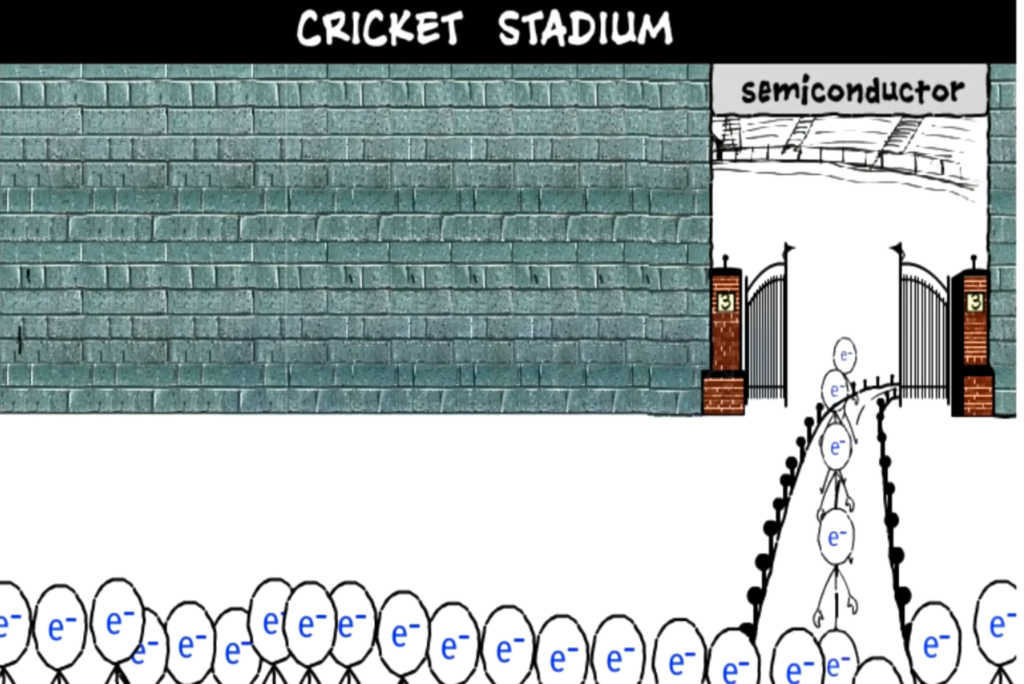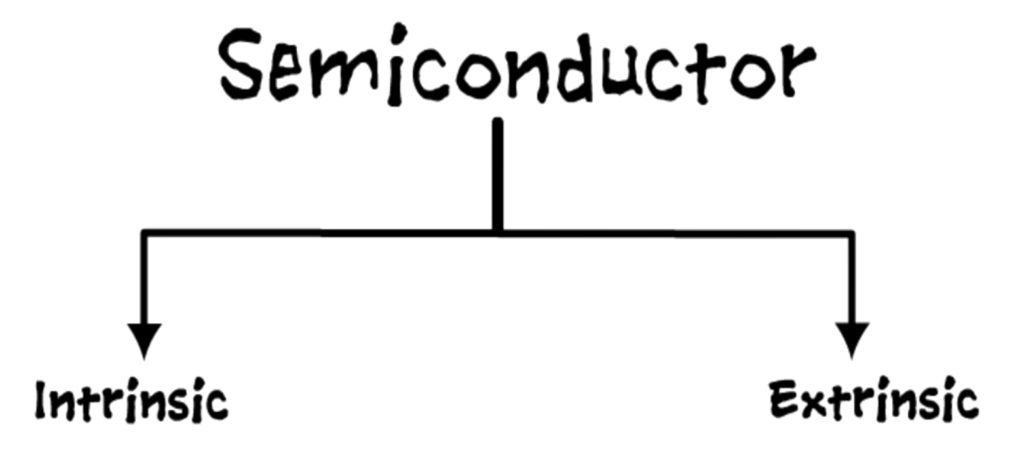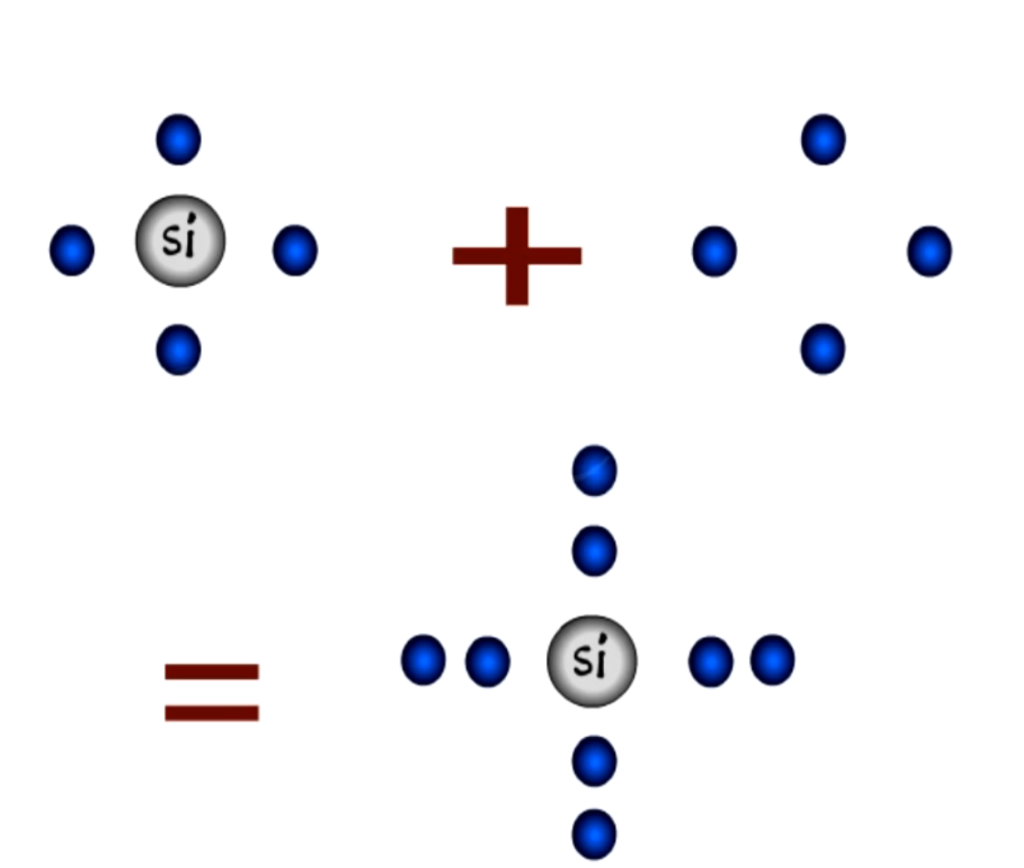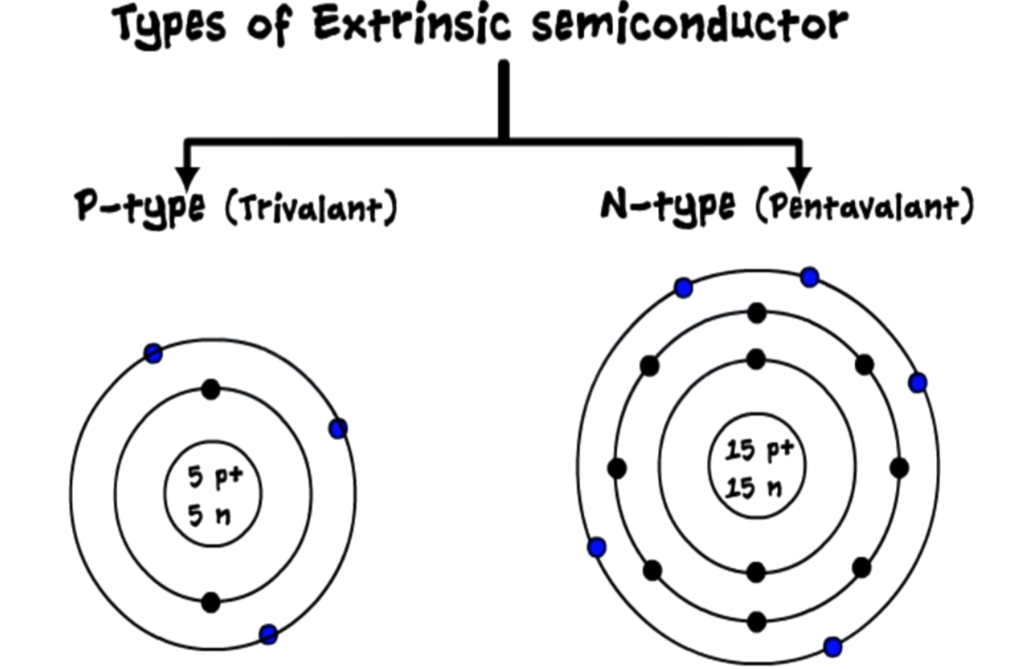Are you learning electronics?
If yes then you are on the right platform.
What is a Semiconductor?
Here, we’re going to learn about semiconductors, insulators, the difference between intrinsic and extrinsic semiconductors, as well as P-type and N-type semiconductors.
Now, let’s first understand the materials. When we talk about materials in electronics, we compare them to their current carrying capacity, and they can be classified into three types, namely conductors, semiconductors, and insulators.
- Conductors are materials that have excellent current-carrying capacity. Or allow a good flow of current through them, such as a copper wire.
- Semiconductors, as the name suggests, allow partial or semi-conduction of the current, or we could say their current-carrying capacity is in between the conductor and the insulator, such as germanium.
- Insulators are materials that are bad conductors of current. It does not allow the flow of current through them as they do not have a current-carrying capacity, such as wood.
Now, let’s further understand this with an example of a stadium entrance and people. Let’s imagine the stadium entrance as a conductor and the people as current. Now we can see a large group of people passing through the gates and into the stadium easily, in the same manner in which conductors allow electricity to pass through them easily.

However, here we see the crowd of people moving past the entrance one by one, slowly in a queue. Now, why is that? That’s because the current in a semiconductor passes through it partially, but continuously.

In the case of insulators that are bad conductors of electricity, we can see the stadium entrance, which we have assumed to be an insulator, is blocked, thus not allowing the crowd of people which we have assumed to be as current to pass through it.

The term semiconducting was used for the first time by Alexander Wolter in 1782, however, the first documented observation of a semiconductor effect is that of Michael Faraday in 1833, who noticed that the resistance of silver sulphide decreased with temperature, which was different then the temperature dependent’s observed in metals.
Types Of Semiconductor

Semiconductors are further divided into intrinsic and extrinsic semiconductors. Depending on the structure, properties, etc.
Intrinsic semiconductors
Do you know what intrinsic means? It means in their purest form, therefore, these types of semiconductors are in their purest form by the nature of their existence. The common semiconductors used are silicon and germanium, and they have 4 valence electrons orbiting in their outermost shell. We can further understand the motion of these electrons by looking at the structure of its atom. However, the atom needs a total of eight electrons in its outer shell to become stable.
Now let’s see how the semiconductor atom acquires the additional 4 electrons and becomes stable. Let’s first look at this process with the help of one atom. This atom already has its 4 valence electrons and requires an additional 4 to become stable, which it shares with its neighboring atoms so that every silicon atom has eight electrons in its outermost shell. However, millions of silicon atoms are bonded together and they form a semiconductor structure that looks like this. All these atoms set up a bond with each other, which is called a covalent bond.

However, these bonds are so strong that the electron fails to break the bond at zero Kelvin. But as the temperature increases, the electron absorbs the heat energy, and it is able to break the bond. Once the bond is broken, the electron becomes free to carry the current. We get a deficiency of an electron in the structure. Hence, an empty space is formed, which can also be referred to as a hole. Therefore, we consider holes to be positively charged. The electron here is negative, and the empty space, or hole, is positive. Therefore, the immediate neighboring electron gets attracted toward this hole and fills its place, thus creating another empty space or hole at its previous position. The process will continue in the entire structure in a random manner.
Extrinsic semiconductors
So let’s understand the second type of semiconductors, which are extrinsic semiconductors. How are they different from intrinsic semiconductors? While intrinsics are the pure form of semiconductors, impurities need to be added to the intrinsics to improve their conductivity, and these semiconductors with impurities are called extrinsic semiconductors.

Extrinsic semiconductors are further subdivided into P-type trivalent and N-type of Pentavalent. As we can see, we have three electrons in the outermost shell of the atom. It is called as a trivalent. In the other atom, we have five electrons in the outermost shell; hence, it is called pentavalent.
The common examples of trivalents are boron and gallium. The process of adding impurities to intrinsic semiconductors is called doping. The impurities that improve the conductivity of these semiconductors are called Dobens. In the case of trivalent, three electrons of boron will form three bonds with silicon and the fourth bond with silicon. There will be one empty space, or hole. As seen previously, the immediate neighboring electron would be attracted toward the hole, thus creating another empty space in its previous location. Simultaneously, the electrons of the silicon atoms acquire thermal energy and keep breaking the covalent bonds at room temperature, thus creating further free electrons, and this movement will go on in the same manner. Therefore, the number of holes generated in this structure dominates over the electrons. Hence, this structure is called a P-type semiconductor.
Now, let’s look at the second type of extrinsic semiconductor, the N-type pentavalent semiconductor. In this, the atomic structure of the N type-extrinsic semiconductor will have five electrons in the outermost shell. As silicon requires only four additional electrons to attain stability in the pentavalent atom, we have one extra valence electron.
So we get a net negative charge due to this extra electron. Hence, its name is N-type semiconductor. Common examples of any type of pentavalent impurities are phosphorus, arsenic and antimony. When we had tested, impurities to an intrinsic semiconductor, We observed that the phosphorus atom forms 4 bonds with 4 silicon atoms fulfilling the needs of silicon. But even after that, there remains one electron that does not form any bond and remains free. And unlike the previous structures, we have free electrons readily available for conduction. This electron rotates randomly around the phosphorus atom following a circular motion. In addition to this, the breaking of bonds as seen in intrinsic semiconductors happens here as well. 4 electrons are in the outermost orbit and made up of covalent bonding of silicon atoms with each other.
Conclusion
In conclusion, the world of semiconductors is a fascinating journey into the heart of modern electronics. From the basics of atomic structure to the complexities of quantum computing, semiconductors have propelled humanity into the digital age. As we navigate the challenges and embrace emerging trends, the future promises even more exciting innovations in semiconductor technology.
You May Interested In:
Top 10 Best Electronics Books for Beginners
Which field is better: IoT or Embedded in today’s industry?